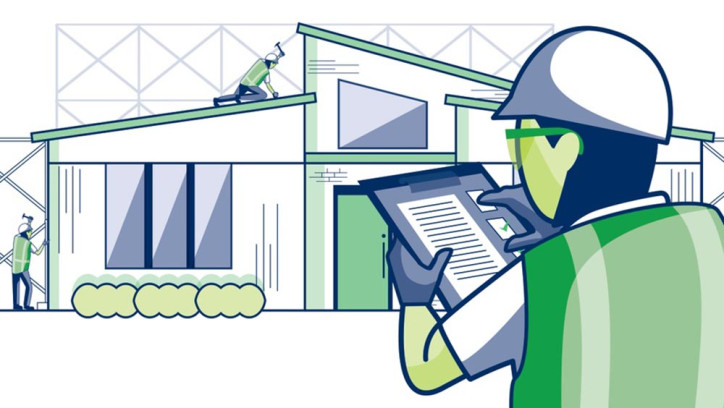Applying for a CodeMark certificate
Last updated: 5 December 2024

To apply for a CodeMark certificate for your building product or building method, you need to contact an accredited and registered product certification body.
Considering CodeMark for your building product or method
Applying for CodeMark takes time and investment, so you need to decide whether it is the right decision for your building product or method.
Because of the extra time and cost involved in achieving CodeMark certification, it is best suited to innovative, higher-risk products where the manufacturer or supplier may find it difficult to satisfy building consent authorities that the product is Building Code compliant. It is also suited to manufacturers or suppliers seeking to improve their product’s acceptance in the Aotearoa New Zealand market.
If your product is CodeMark-certified, this:
- demonstrates it meets Building Code performance requirements
- provides assurance that the product is capable of performing as intended
- streamlines the building consent and inspection process
- gives you a marketing advantage.
Building consent authorities must accept a CodeMark certified product as complying with the New Zealand Building Code when it is used in building work, as long as the product is specified for use in accordance with the product certificate.
Applying for certification
To apply for CodeMark, you need to contact an accredited and registered Product Certification Body (PCB). You will need to supply technical evidence detailing how your building method or product complies with the Building Code. If successful, you'll get a CodeMark product certificate that, once registered by MBIE, shows your product is compliant with the New Zealand Building Code.
CodeMark certificates can only be issued by PCBs that have been registered by MBIE.
Some certification bodies certify products against both the New Zealand and Australian Building Codes whilst others operate solely in the Aotearoa New Zealand market. You can determine the suitability of a certification body by contacting them directly.
PCBs may have different information requirements. You can also expect the timeframes and costs for certification to vary between PCBs.
You should prepare the following information for your application:
- a description of your product
- its purpose and use (for example, how it might be used in a building)
- any limitations or conditions on its use
- all clauses of the Building Code the product complies with and evidence such as test reports to support code compliance
- technical details
- details of how your product is to be installed
- product support and maintenance requirements
- health and safety information regarding the installation and use of the product.
A product technical statement (PTS) is a good first step to help you summarise and present your product's key technical information.
You will also need to provide:
- details on how you believe your building product or method complies with the Building Code (is this via an acceptable solution, verification method or alternative solution?)
- evidence of compliance with the Building Code (such as test reports, in service history, independent assessments and/or appraisals)
- a product quality plan: this is a document specifying the procedures and associated resources applied to a specific product and its manufacture, and who’s responsible for these.
Good technical information takes into account the needs of designers, builders, owners and building consent authorities.
For more detailed information on what the certification body will consider when evaluating your product, please refer to the CodeMark Scheme Rules (link to rules)
You will need to pay an application fee to the certification body, as well as ongoing audit costs. Audits are carried out, on an annual basis, to monitor products and their manufacturing process and to keep the certificates valid.
To assess your product for CodeMark, the PCB will review the information and evidence provided.
They must ensure your product or system will be produced consistently if they certify it. This may include assessing a sample or samples of your product as used or installed. It may also include factory and site visits.
Generally, the better technical evidence you provide, the quicker a PCB can make its certification decision.
Accredited and registered Product Certification Bodies (PCB)
Only current registered certification bodies can issue product certificates under the CodeMark scheme. You can contact any of the PCBs on the register to apply for certification under the CodeMark scheme.
Register of accredited and registered Product Certification Bodies - tepae.building.govt.nz
Applying for registration
Once your product has been certified by a registered PCB, it will issue a product certificate that then needs to be registered with MBIE.
The registration of this certificate is arranged by your PCB and will cost you a fee.
The current fee for registering a CodeMark Certificate with MBIE is NZD $180.30 (excluding GST). MBIE will issue you with an invoice for this fee.
MBIE will not evaluate your product for compliance against the Building Code when registering CodeMark certificates, as this is the responsibility of the PCB during the certification process. The registration process is an assessment completed by MBIE against relevant registration criteria outlined in the supporting legislation for this scheme.
Only CodeMark certificates that have been registered by MBIE and that are current on MBIE's public register are valid certificates. If a certificate is not on MBIE's register it cannot be used as a 'deemed to comply' pathway for that product through the building consent process.
Certificate holders
CodeMark certificate holders have ongoing responsibilities to ensure the certified product continues to be manufactured to the same standards, levels and quality as those against which it was evaluated, certified and registered.
Users of CodeMark certificates (such as designers or Building Consent Authorities) must be able to be certain they have the most current, up to date product certificate when specifying products or assessing the compliance of building work involving a certified product.
Responsibilities of CodeMark certificate holders
The CodeMark scheme rules now apply to you: these contain details of what's required of certificate holders, including how and when to use the CodeMark branding.